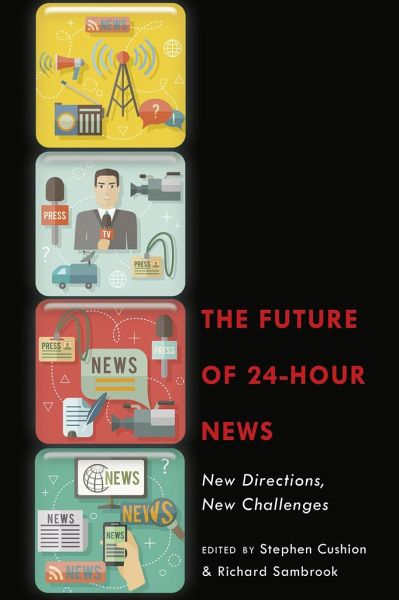
The Future of 24-Hour News
New Directions, New Challenges
Herausgegeben: Cushion, Stephen; Sambrook, Richard
Versandkostenfrei!
Versandfertig in 6-10 Tagen
166,10 €
inkl. MwSt.
Weitere Ausgaben:

PAYBACK Punkte
0 °P sammeln!
Over the last 30 years 24-hour television news channels have reshaped the practice and culture of journalism. But the arrival of new content and social media platforms over recent years has challenged their power and authority, with fast-changing technologies accelerating the speed of news delivery and reshaping audience behaviour. Following on from The Rise of 24-Hour News Television: Global Perspectives (Cushion and Lewis, 2010), this volume explores new challenges and pressures facing television news channels, and considers the future of 24-hour news. Featuring a wide range of industry and ...
Over the last 30 years 24-hour television news channels have reshaped the practice and culture of journalism. But the arrival of new content and social media platforms over recent years has challenged their power and authority, with fast-changing technologies accelerating the speed of news delivery and reshaping audience behaviour. Following on from The Rise of 24-Hour News Television: Global Perspectives (Cushion and Lewis, 2010), this volume explores new challenges and pressures facing television news channels, and considers the future of 24-hour news. Featuring a wide range of industry and academic perspectives, including the heads of some of the major international news channels (BBC Global News, Al Jazeera and Sky News, among others) as well as leading academics from around the world, contributors reflect on how well rolling television news is reinventing itself for digital platforms and the rapidly changing expectations of audiences. Overall, the 24 chapters in this volume deliver fresh insights into how 24-hour news channels have redefined rolling news journalism - or potentially could do - in order to remain relevant and effective in supplying continuous news for 21st-century audiences.














